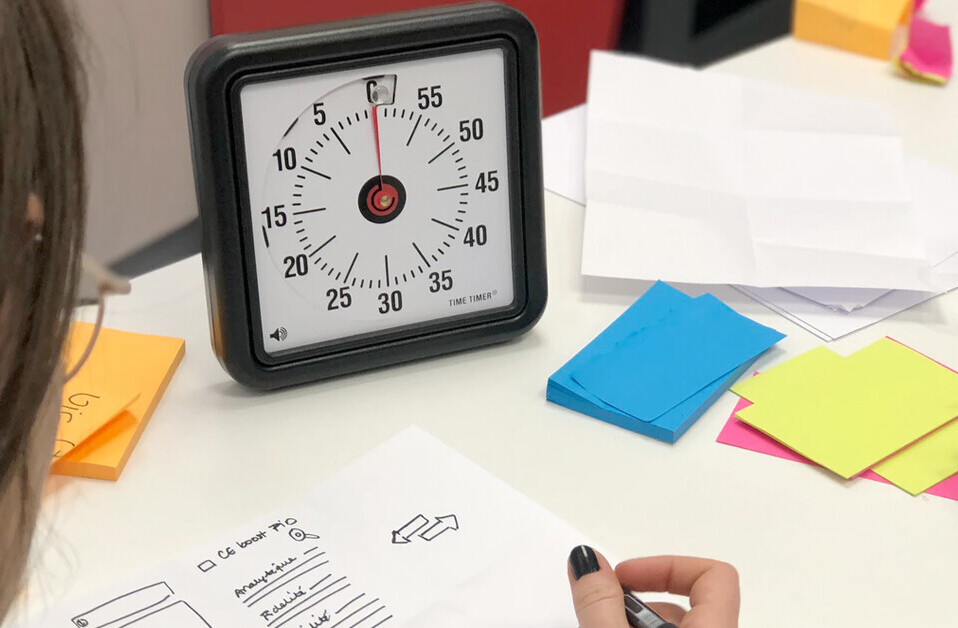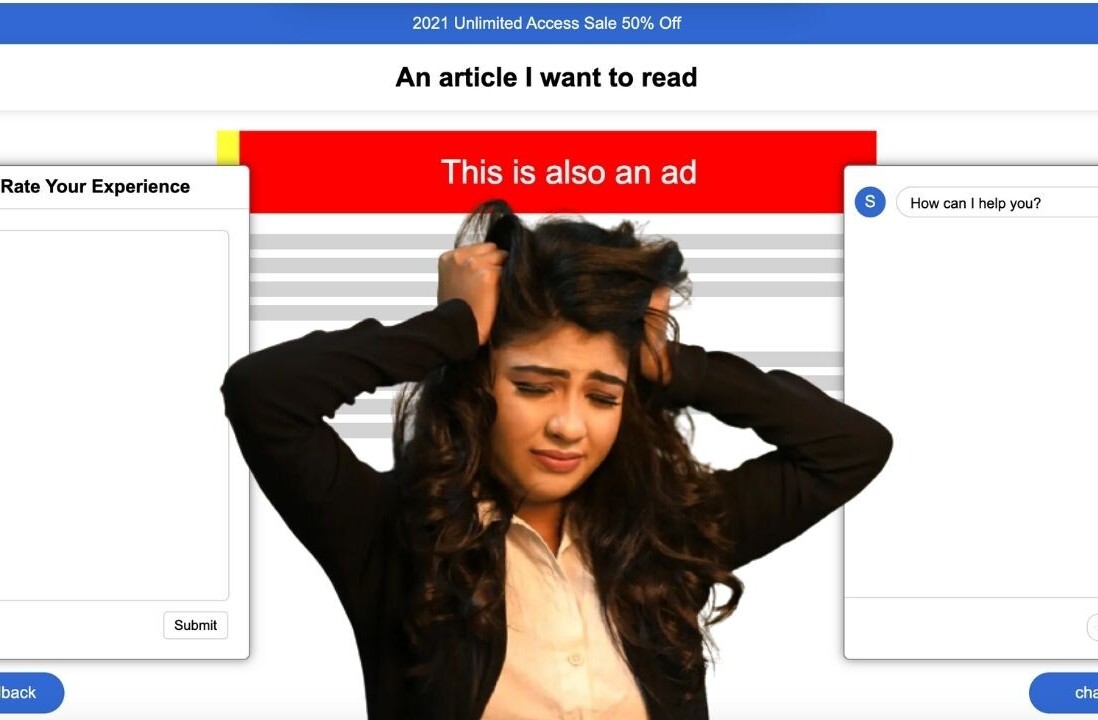
Your business’s website is one of its most important digital assets. It’s likely the first result that will appear when a potential customer searches for you and therefore will be their first impression of your brand.
That’s why it’s so important to get the design and messaging right up front. For a new website or redesign to be successful, it should be carefully planned and incorporate feedback from your team, customers and other stakeholders. We asked a group of Young Entrepreneur Council members the following question:
What’s your best advice for business owners looking to build their first website or do a complete redesign?
Their best answers are below:
1. Set a goal first
![]()
One of the biggest elements we cover before starting a project is getting a clear understanding of the business’s goals. A website can achieve a number of objectives, including increasing sales, getting better search engine rankings, improving operational efficiency, improving customer service, getting more leads, etc. Get clear on the priority of your goals first. This will help direct the solution. – Kevin Getch, Webfor
2. Encourage constructive criticism from multiple sources
![]()
Your website doesn’t need all the bells and whistles you might think it does. More important than a flashy site is one that’s welcoming and easy to use for visitors. So don’t overload your website with too many features, options and ways for your site visitors to get lost and confused. Keep it simple and clean. – John Turner, SeedProd LLC
4. Avoid alienating existing customers
![]() When you develop your company’s first website, you may already have a pre-existing customer or client base that you’ve sold your products or services to directly. While it may be tempting to portray a completely new image through your website, be mindful that any major changes in brand messaging can alienate your earlier supporters. – Firas Kittaneh, Amerisleep
When you develop your company’s first website, you may already have a pre-existing customer or client base that you’ve sold your products or services to directly. While it may be tempting to portray a completely new image through your website, be mindful that any major changes in brand messaging can alienate your earlier supporters. – Firas Kittaneh, Amerisleep
5. Have a clear call to action
![]() The intention of a website is to inspire people to take an action. Make sure that it’s a seamless experience from landing page to purchase by having a clear call to action on each page. Don’t hide things like phone numbers or booking buttons; don’t hide prices or list them separately. Everything should be easy to use and to discern. – Rachel Beider, Massage Greenpoint, Massage Williamsburg and Massage Outpost
The intention of a website is to inspire people to take an action. Make sure that it’s a seamless experience from landing page to purchase by having a clear call to action on each page. Don’t hide things like phone numbers or booking buttons; don’t hide prices or list them separately. Everything should be easy to use and to discern. – Rachel Beider, Massage Greenpoint, Massage Williamsburg and Massage Outpost
6. Make it intuitive
![]() The gold standard for all online purchasing experiences is speed and intuitive design. You also want to make sure you’re not doing anything outright irritating. Irritating website features include audio that plays automatically, poor navigation and excessive pop-ups. Go to a website that you like and one that you dislike. Use good elements, and avoid the bad ones. – Chris Quiocho, Offland Media
The gold standard for all online purchasing experiences is speed and intuitive design. You also want to make sure you’re not doing anything outright irritating. Irritating website features include audio that plays automatically, poor navigation and excessive pop-ups. Go to a website that you like and one that you dislike. Use good elements, and avoid the bad ones. – Chris Quiocho, Offland Media
7. Highlight your team and your story
![]() B2B companies are still built and run by humans, so showcase the team behind your technology and services. Spend a little extra time on the design and content of your about us or company page to make it easy for people to feel a personal connection and learn about the people behind the product. This is also a great place to show your values and the reason behind starting the company. – Roger Lee, Human Interest
B2B companies are still built and run by humans, so showcase the team behind your technology and services. Spend a little extra time on the design and content of your about us or company page to make it easy for people to feel a personal connection and learn about the people behind the product. This is also a great place to show your values and the reason behind starting the company. – Roger Lee, Human Interest
8. Set an appropriate budget
![]() As the saying goes, “You get what you pay for.” Your website is your storefront. It’s usually at the center of your marketing. Don’t just build it on a free platform with a template and call it a day. Make a plan. Build a budget. Invest in messaging. Invest in photography and video. Invest in design. Invest in clean code, high performance and the right content management system. Don’t settle; pay the extra dollar. – Robby Scott Berthume, Bull & Beard
As the saying goes, “You get what you pay for.” Your website is your storefront. It’s usually at the center of your marketing. Don’t just build it on a free platform with a template and call it a day. Make a plan. Build a budget. Invest in messaging. Invest in photography and video. Invest in design. Invest in clean code, high performance and the right content management system. Don’t settle; pay the extra dollar. – Robby Scott Berthume, Bull & Beard
9. Check out your competitors’ websites
![]() Evaluate the websites of your closest competitors before you build or redesign your site. Figure out what works and doesn’t work, and then implement the positives into your design. Also, make sure your site loads quickly, looks appealing and offers a surplus of intuitive navigation. – Blair Thomas, eMerchantBroker
Evaluate the websites of your closest competitors before you build or redesign your site. Figure out what works and doesn’t work, and then implement the positives into your design. Also, make sure your site loads quickly, looks appealing and offers a surplus of intuitive navigation. – Blair Thomas, eMerchantBroker
10. Answer the right questions
![]() Your website can be clean and beautiful, but if it doesn’t answer the right questions, it may not fulfill its intended purpose. Consider your audience and the questions they will have, such as: What is this product (in simple terms)? Is it relevant to me (and how do I know)? Are other people interested in it (social proof)? What are my alternatives? Put on your buyer hat, and simplify. – Peter Kozodoy, GEM Advertising
Your website can be clean and beautiful, but if it doesn’t answer the right questions, it may not fulfill its intended purpose. Consider your audience and the questions they will have, such as: What is this product (in simple terms)? Is it relevant to me (and how do I know)? Are other people interested in it (social proof)? What are my alternatives? Put on your buyer hat, and simplify. – Peter Kozodoy, GEM Advertising
11. Work with good developers for complicated projects
![]() A free DIY website can actually be very easy, and I would recommend it for companies with low capital. However, most e-commerce sites have a reality check three months into a rabbit hole. For complicated projects, hire a good team from the start. Ensure that they guarantee their work and match your communication style. If you misjudged, and they cannot deliver, never be afraid to shake hands and part ways. – Codie Sanchez, Codie Ventures LLC
A free DIY website can actually be very easy, and I would recommend it for companies with low capital. However, most e-commerce sites have a reality check three months into a rabbit hole. For complicated projects, hire a good team from the start. Ensure that they guarantee their work and match your communication style. If you misjudged, and they cannot deliver, never be afraid to shake hands and part ways. – Codie Sanchez, Codie Ventures LLC
Get the TNW newsletter
Get the most important tech news in your inbox each week.




